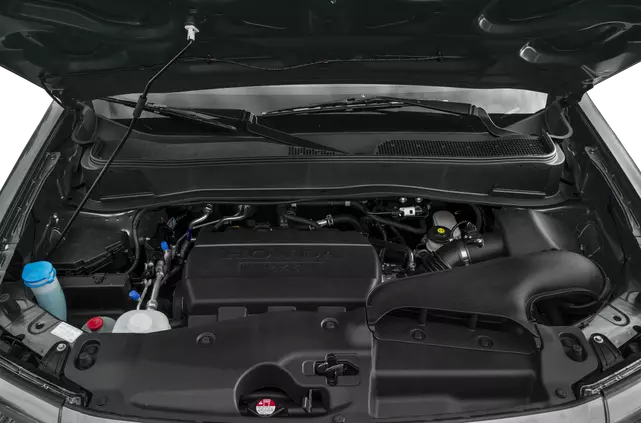If you want to maintain the performance of your Honda Pilot, you must know its firing order.
Your engine’s firing order determines which cylinders fire in what order, and it’s important because it prevents multiple cylinders from firing simultaneously.

For Honda Pilot models from 2002 to 2015, here are the firing order and a helpful visual diagram. It’s time to get started.
Honda Pilot Firing Order
In this engine, the first cylinder that fires is number 1, since the firing order of the Honda Pilot is 1-4-2-5-3-6.
After the second cylinder, which is 4, comes the third, which is 2, and so on to the sixth, which is 6.
Honda pilot engines fire in this order. Honda Pilot engine problems can be detected based on the firing order.

It is important to check and fix the cylinders that aren’t firing properly if your engine is misfiring.
Honda Pilot Diagram
With this diagram, you can visualize how each cylinder works in your Honda Pilot engine now that you know its firing order.
Honda Pilot Firing Order Importance
Several factors influence how your Pilot runs, including the firing order of its engines:

Identifies faulty cylinders
It’s very easy to identify which cylinders are misfiring when your engine misfires.
You can then use the cylinder firing order to figure out which cylinders fail to fire based on the OBD2 Scanner’s output.
You can then determine whether it’s a bad spark plug, worn-out piston ring, or a bad coil pack.
Reduces vibrations in engines
Your Pilot’s firing order will also decrease vibrations by ensuring it is in the correct order.
The vibrations in your vehicle will increase if your engine is not firing correctly.
As a result, your engine components may wear prematurely and your performance may be compromised.
Production of power with efficiency
Engines generate power more efficiently when they are fired in the right order.
Read more about Honda Odyssey’s 3.5 Firing Order – The Engine’s Rhythmic Heart
As a result of the Honda Pilot’s firing order, fuel consumption is minimized while power is maximized, making it one of the most fuel-efficient vehicles in its class.
Delivers power smoothly
In order to maintain smooth power delivery, your Pilot’s firing order is also crucial.
Acceleration or climbing hills will be difficult if the engine does not fire in the correct order. Consequently, your vehicle may stall out at stoplights and have difficulty moving forward.
The longevity of engines
In addition to engine wear and longevity, the firing order plays a significant role in engine longevity. When the firing order is incorrect or inefficient, the engine will wear prematurely, reducing its lifespan.
You may read Honda Odyssey VSA Light: Causes & Solutions
The optimal timing of exhausts
Besides the camshaft design, the firing order influences exhaust valve timing. Engine performance is influenced by how well exhaust gases are expelled, which affects how efficiently the engine runs.
Honda Pilot Firing Order Table
| Order | Cylinder Number |
| 1 | 1 |
| 2 | 4 |
| 3 | 2 |
| 4 | 5 |
| 5 | 3 |
| 6 | 6 |
An easy way to find out the firing order of the Honda Pilot’s 3.5L engine is to refer to the following table. A cylinder number indicates its location within an engine, while a firing order shows how each spark plug ignites within it.
What is the engine in the Honda Pilot models from 2002 to 2015?
Honda Pilot’s first and second generations manufactured between 2002 and 2015 were powered by the legendary 3.5L V6 engine.
240 horsepower and 242 lb/ft of torque were produced by the first generation between 2002 and 2009. Second-generation engines are now capable of 250 horsepower and 253 pound-feet of torque, a slight improvement over the first generation.

Drive is provided to the front wheels via an all-wheel-drive system with an optional limited-slip differential and an automatic transmission mated to a 5-speed automatic transmission.
Expert Tips for Firing Order Optimization
You can fine-tune your Honda Pilot’s firing order for specific driving conditions with the help of automotive professionals. Find out how to optimize the performance of your engine from the experts.
Read: Honda Odyssey Firing order
Read: Honda B13 service
Read: Honda B17 Service
Read: Honda Check Charge System
Read: Honda A13 Service [What It Included & Cost]
Read: Honda Maintenance Code A127 Explained
Read: Honda B14 Service
Read: Honda A17 service
Frequently Asked Questions
What happens if the firing order is incorrect?
It can cause misfires, engine performance issues, and long-term damage if the firing order is incorrect.
Can firing order issues be resolved without professional help?
Performing DIY checks can resolve minor problems, but complex problems should be handled by professionals.
How often should I check my Honda Pilot’s firing order?
If you notice any engine performance issues, you should perform regular checks during routine maintenance.
Are there performance benefits to altering the firing order?
It is important to consider potential drawbacks before modifying a system, even if it may offer performance gains.
Is the firing order the same for all Honda Pilot models?
As different Honda Pilot models may have different firing order specifications, it’s important to refer to your vehicle manual.
Conclusion
As we wrap up this article, let’s review the key points we discussed. In order to ensure a smooth and efficient driving experience, it is crucial to understand and maintain the correct firing order in your Honda Pilot.

![Honda Odyssey Firing Order [1995-Current]](https://gearfixup.com/wp-content/uploads/2024/01/Honda-Odyssey-Firing-Order-1995-Current-150x150.webp)

![Honda B14 Service [What Is Included & Checklist, Cost]](https://gearfixup.com/wp-content/uploads/2024/01/Honda-B14-Service-What-Is-Included-Checklist-Cost-150x150.webp)
![Honda A17 Service [What’s Included & Cost]](https://gearfixup.com/wp-content/uploads/2024/01/Honda-A17-Service-Whats-Included-Cost-150x150.webp)